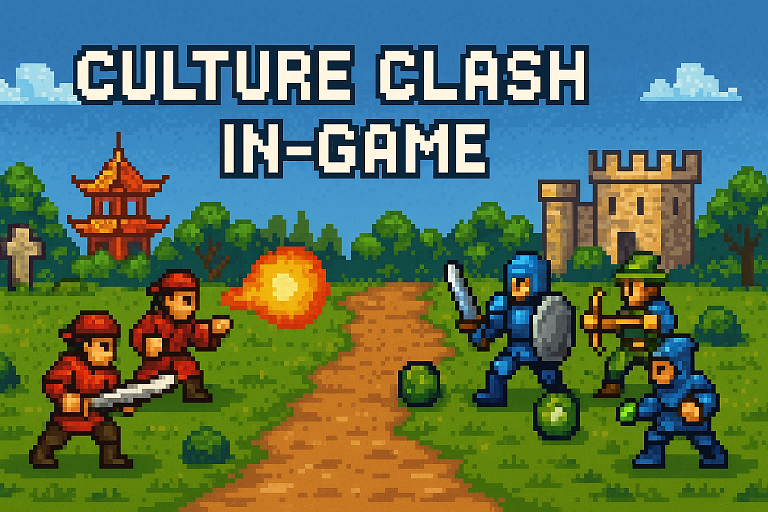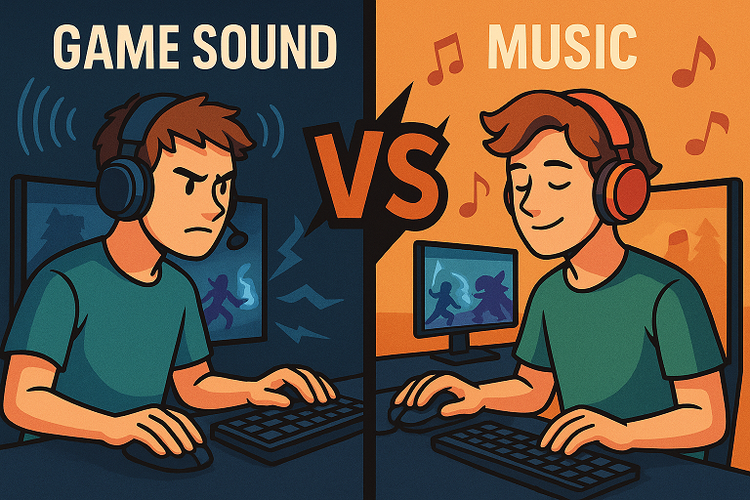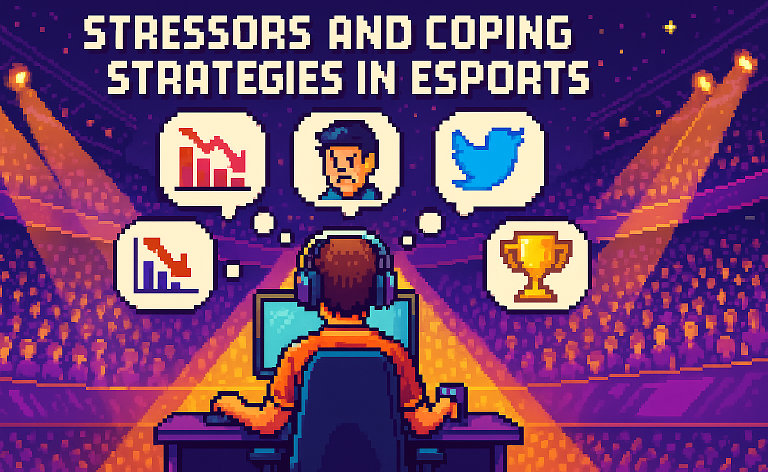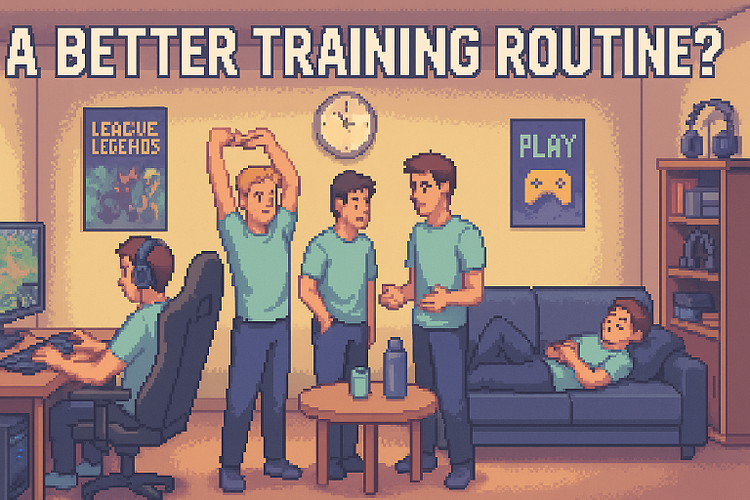Fog of War - How Air Pollution kills Esports Competition

Welcome everyone. Welcome to today's episode of Gaming Science.
Today's episode will be a longer one, but trust me, it'll be interesting. We will discuss the impact of air pollution on Esports performance of teams and players. You will learn how less clean air affects the body, decision making, and ultimately, performance. We will also see how significant the impact is and what a team's relative strength has to do with it.
• Air pollution does physical harm to the body and affects cognitive functioning.
• Increased air pollution decreases the winning probability of a weaker team.
• The difference between stronger and weaker teams widens with increased air pollution.
• Teams similar in their ranking are less effected.
• The relative difference in a team's strength against its rival weighs more than its absolute strength.
• Weaker teams play more risky, choose less frequent team combs and player lineup in a polluted environment.
• Stronger teams play more conservative.
• Results are similar for players.
• Fans may profit from those results, weaker teams don't.
• Should Esports tournaments we held in places less air polluted?
🌫️ The "Fog of War" of Real-Life
After reading the title of today's episode, you're probably thinking: What does air pollution have to do with Esports performance? Well, as we will see, it does have quite a lot to do with it.
The scientific literature on the effects of air pollution on performance usually focuses on the connecting element of physical health. This means that air pollution causes physical harm to the individual, which in turn affects cognitive functioning [1]. Physical harm can be caused by irritating the respiratory system, disrupting oxygenation in cells, and inflammation in the brain [2]. This causal link has been shown to impact labor productivity, students' exam results, and the decision quality of judges or chess players [3].
All those areas are areas of high cognitive intensity. The same goes for Esports, where strategic (on the individual and team levels), as well as split-second decision-making, can make the difference between victory and defeat. At the same time, big Esports tournaments are commonly held in cities with high populations and, therefore, air pollution. Accordingly, it is vital to investigate
- firstly, whether air pollution has an impact on Esports performance,
- secondly, if it does, how those impacts manifest, and
- lastly, if pollution acclimation have an impact on performance.
In order to answer those questions, the authors used all LoL LPL matches played between the spring season in 2017 and the summer season in 2021. This sums up to 26,380 match-player, and 5,222 match-team observations. In addition, they collected player data as well as air pollution scores from the cities and at the hours the matches were.
☁️ Results - the weak get weaker
The most shocking revelation to me is not the fact, as we will see, that air pollution indeed has an impact on Esports competition, but rather the magnitude of it.
Okay, let's imagine you're the, on paper, weaker team facing a stronger team. Depending on the time and city the match takes place - and therefore the amount of air pollution you're exposed to - your chances of winning can shrink drastically. An increase of 10 or 27.7 μg/m³ reduces your winning probability by 1% to 5.54% respectively. In the latter case, this would set the two teams apart by 12.3% in season rankings. This really is a mind-blower!
"The above results indicate that air pollution widens the performance gap between teams. We quantify the performance gap more directly as the difference in kills, assists, and gold earned between the stronger and weaker teams [3]."
To put this into perspective, the average match-hour value was 35.7 μg/m³ with a maximum of 258 μg/m³. The average amount is already more than twice the WHO's recommended 15 μg/m³ for daily exposure. About 21% of the matches were held in a considered "very unhealthy" environment (≥ 50 μg/m³). Even between matches on the same day, changes in air pollution of up to 6.4 μg/m³ were measured. Meaning, just by getting (un-)lucky regarding the time your match is played, your team can end up with a (dis-)advantage.
"In other words, match-hour exposure to air pollution is the primary factor that affects a player’s and team’s competitive performance [3]."
Additionally, the relative difference in a team's strength weighs more than the level of its own absolute strength.
However, this does not explain how exactly high amounts of air pollution leads to decreased performance. Now, recall what we said at the beginning: air pollution does physical harm to the individual which, in turn, affects cognitive functioning. Cognitive functioning is the key term here.
Let's imagine you're playing an important tournament game in a city during rush hour. The polluted air you breathe in clouds your brain, resulting in a decline in cognitive functioning. One way this can be shown is by looking at markers such as decision time, pick-and-switch frequency during the lobby, or risk-taking.
All those measures worsened when a weaker team faced a stronger team in an air-polluted environment. In accordance with that, the weaker team adopted less frequently used lineups (more aggressive, risk-seeking players), and chose less frequently used champions.
"This suggests that a more polluted environment renders the weaker team more likely to adopt an aggressive strategy, whereas the stronger team tends to stick to a more conservative one [3]."
Next, we make it all so obvious how this gap in performance comes to be in the first place. The increased winning probabilities for a stronger team are a byproduct of decreased in-game performance measures such as kills, assists, and gold earned by the weaker team.
"[Conversely], both the frequency of multiple kills and the share of multiple kills in total kills increased [...] for the stronger team under more severe air pollution [3]."
Not very surprising is the fact that those team-level effects were, with similar magnitudes, found on the player's level. Air pollution affects the player's cognitive functioning, hence, in-game measures, and ultimately the winning probability of the team.
Last but not least, the question of whether pollution acclimation has an impact on performance or not can simply be answered with a "No!", according to the study.
"[It was found] that pollution acclimation effect is unlikely to mitigate the [...] impact of air pollution on team performance [3]."
What this means is that the effects of air pollution on the performance of players and teams "is primarily driven by instantaneous pollution [3]." Being in an area with a high amount of air pollution at the hour of the match is what's important, not that you've been previously exposed to pollution (e.g., the day before).
🥳 Implications - good for viewers, bad for teams?
Let's face it, those results have tremendous implications. What shines through is the notion that increased air pollution widens the performance gap between a stronger and a weaker team; it "tilts the competitive balance of the match [3]." Should, as a consequence, tournaments only be held in areas with a low level of air pollution in order to maintain balance? Should tournament organizers shift locations as a consequence?
Though this sounds logical, major cities have always been the main attractors for Esports competitions for many reasons such as logistics (hotels, airports, good internet connection), fans, etc. However, tournament locations more outside the city or in cities with lower population may be valid options.
Another implication concerns the fans and their watching experience as "air pollution reduces the unpredictability of the match and lowers the intensity of competition [3]." When you watch a LoL match taking place in Shanghai, chances are you'll see a match that is a bit more of a stomp or wild than you would when they play in a small town or village with clean air. For most of us, this is probably very entertaining. Watching a different roster, more aggressive calls, or team composition is exciting and adds uncertainty. So I guess air pollution is a thumbs up for the viewers?
Speaking of more aggressive moves, imagine you're the coach of a team facing a relatively weaker team. You may want to have the results of this study in mind and prepare your players for some non-standard picks-and-bans, team compositions, tactics, and riskier moves than usual. Similarly, when you're competing in a single-player game such as StarCraft, preparing for cheeses or aggressive moves may help you come out ahead. On the other hand, this opens up the old thought experiment of what if he knows that I know that he knows that I know... mind games!
Till next week,
Christian 😃
Join over 250+ (🤯) Gaming Science subscribers and become smarter every week.
"I love this type of content, thank you Chris."
📜 References
[1] Aguilar-Gomez et al., 2022
[2] Peeples, 2020
[3] Mo et al., 2023






